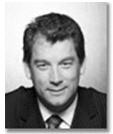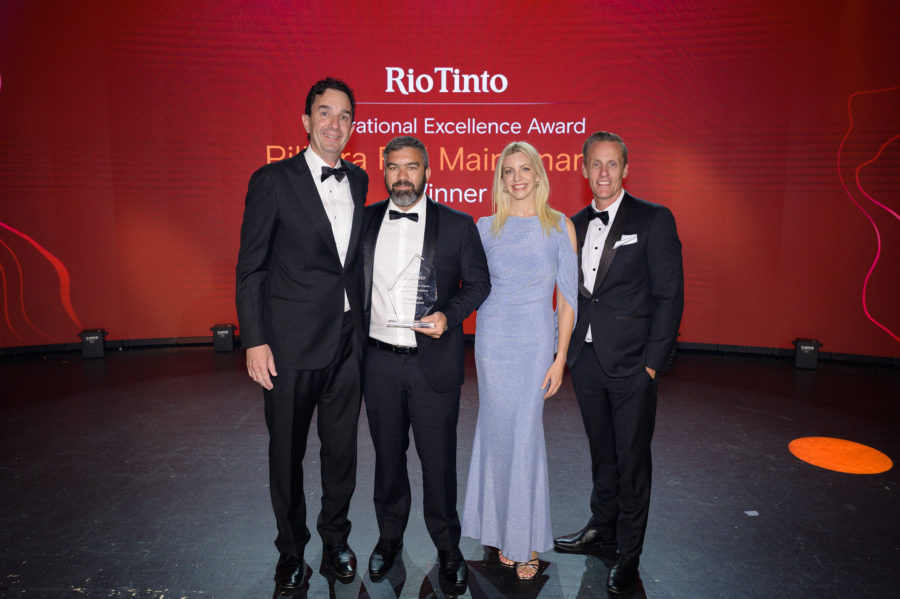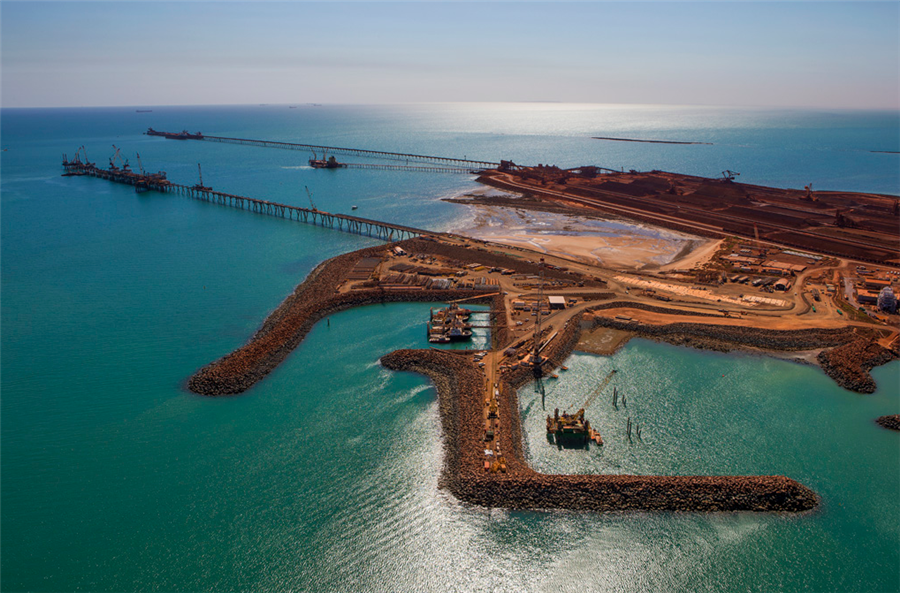Striking a balance with zinc investments
 Stock picking can be an exercise in compromise, and investors who wait for a perfect zinc mining project could be sitting on the sidelines—and missing out on profits. Advanced zinc projects close to infrastructure are limited, and with zinc supply contracting in 2013, new operations are emerging both within and outside of established districts. Matthew O’Keefe, mining analyst with Mackie Research, talks with The Metals Report about his criteria for choosing investments in the zinc small-cap space and explains why he’s sometimes willing to make concessions.
Stock picking can be an exercise in compromise, and investors who wait for a perfect zinc mining project could be sitting on the sidelines—and missing out on profits. Advanced zinc projects close to infrastructure are limited, and with zinc supply contracting in 2013, new operations are emerging both within and outside of established districts. Matthew O’Keefe, mining analyst with Mackie Research, talks with The Metals Report about his criteria for choosing investments in the zinc small-cap space and explains why he’s sometimes willing to make concessions.
The Metals Report: What’s your forecast for the upper range of zinc prices in 2013 and the first half of 2014?
Matthew O’Keefe: I think we’re going to start to see a reversal in the fundamentals that should start to drive the price of zinc up. Some major mine closures are coming in North America, so the supply side is going to be a little tighter. Xstrata Plc’s (XTA:LSE) Brunswick #12 mine in New Brunswick, a fairly large operation producing around 275,000 tons per year, is closing this month and Perseverance, another Xstrata mine located in Quebec is also slated to close this year, removing another 228,000 tons from the supply. Zinc inventories have already begun to flatten and drop a little, a trend we expect will continue next year when two other large mines are expected to close, Lisheen in Ireland and Iscaycruz in Peru.
We have a 2013 zinc target of $1 per pound ($1/lb). In 2014, we’re moving it up to $1.20/lb, citing this drop in inventories as a price increase catalyst. We’re keeping our long-term price pretty low at $0.95/lb.
TMR: What are zinc’s key uses?
MO: Zinc is primarily used to galvanize steel to prevent it from rusting and as an alloying metal in manufacturing, so it’s related to the construction and automotive industries. In that respect, it is one of the key economic metals and strongly correlated to global economic growth.
TMR: Geologically speaking, why is lead often associated with zinc?
MO: Lead and zinc commonly occur together as part of the ore-forming process. Most lead-zinc deposits occur in volcanogenic massive sulfide (VMS) deposits, a common type of deposit initially formed on the ocean floor. Chemically, the lead- and zinc-forming minerals behave quite similarly, so under the same conditions they generally precipitate out at the same time.
TMR: What are the essentials of your investment thesis for lead-zinc plays in the small-cap space?
MO: I like the small-cap space because in addition to commodity exposure, you see value creation as the company passes development milestones. I look for advanced projects that are close to infrastructure and that carry manageable risk. Does it also have a good resource with decent byproducts? A good management team? Reasonable access to capital? Those are the main criteria.
TMR: Let’s get into your coverage universe. You recently traveled to Foran Mining Corp.’s (FOM:TSX.V)McIlvenna Bay zinc-copper-gold-silver project in Saskatchewan. What were two or three takeaways from your trip?
MO: The trip to McIlvenna Bay reinforced the reasons I liked the project in the first place―its location and access to not just regular infrastructure like roads and power but to mining-specific infrastructure. McIlvenna Bay is just 60 kilometers from Flin Flon, a major mining center where HudBay Minerals Inc. (HBM:TSX; HBM:NYSE) has the bulk of its operations, including an operating zinc smelter. And the town has rail, allowing concentrate to be shipped globally. We traveled by road all the way to the site in just over an hour with no problems. With this abundance of infrastructure, Foran has the luxury of being able to focus on building a mine and a mill without having to deal with the permitting issues and capital cost escalations commonly associated with basic infrastructure development.
The McIlvenna Bay resource is attractive, with total resources of over 20 million tonnes (20 Mt) containing 1.8 billion pounds of zinc and over 500 million pounds of copper. It’s actually two resources; one that is copper rich and another that is zinc rich. Multiple metals allow for some diversification, which is good for appealing to multiple groups for both funding and sales. The management has a good understanding of that and I was very impressed. I also like the exploration potential. That deposit is still quite open and the area is quite prospective. The company has a drill program on its neighboring Balsam property, so we should see some results from that in the next few weeks.
TMR: You have said that you can’t have zinc in your copper concentrate or copper in your zinc concentrate. Is there an easy solution for that issue?
MO: Clean concentrates are the most saleable. You pay a penalty if there is zinc in your copper concentrate or vice versa, but there are ways to produce cleaner concentrate. What helps at McIlvenna Bay is that the copper and zinc are in two discrete zones—a brecciated copper zone butted up against a massive sulfide zone–and they are visually distinctive, which makes mining easier. The overlapping zone isn’t that big. There will be a bit of contamination, but it’s manageable. Foran’s main challenge will be developing its mine plan and the plant design needs to accommodate two types of ore. This may mean Foran would need multiple processing circuits.
TMR: Could that raise capital expenditures?
MO: When there are multiple circuits, there will be higher capex costs, but for this type of operation it’s minor, especially compared to infrastructure costs, which it won’t have to deal with.
TMR: Foran has about $9 million ($9M) in cash, but that’s not enough to get a feasibility study done. When will the company have to go back to the market for more money?
MO: Foran is looking at doing a scoping study later in the year that will be based on an updated resource. It’s funded for this work but if it wants to move to the prefeasibility stage, it would need to raise money toward the end of the year.
TMR: Other small-cap companies operating in this area have joint ventures with HudBay Minerals, which operates the 777 Smelter in Flin Flon, but Foran does not have a relationship with HudBay. Do you know why?
MO: At present, there is no ownership interest or partnership between the two companies and there is no reason for that right now. Foran is well financed, with a very strong and supportive shareholder base. Pierre Lassonde, former president of Newmont Mining Corp. (NEM:NYSE), is a big shareholder. Plus, Foran has a pretty credible management team, so it’s well liked by the institutional investors on the street.
Having said that, the companies do talk and HudBay seems to know a lot about what’s going on at Foran. Presumably it’s keeping a close eye on it.
TMR: What are some other primary zinc deposits in Canada that companies are developing?
MO: We cover Trevali Mining Corp. (TV:TSX; TREVF:OTCQX), which is a very advanced near-term producer with several zinc assets in New Brunswick. New Brunswick has been a zinc and base-metal mining camp for a long time. Trevali’s principal asset there is its Halfmile mine, which shipped ore to the Brunswick #12 mill for treatment last year. That proved too expensive, so Trevali recently purchased an existing mill and mine nearby called Caribou that it’s currently refurbishing. Once complete, Trevali will be able to ship ore from its Halfmile mine to Caribou for processing. It also plans to bring the adjoining Caribou mine into production for additional feed.
So what I see in Trevali is a growing producer and new dominant player in the New Brunswick camp. It hasn’t started production yet, which is one reason why the stock’s been flat. I think folks are waiting to see its Santander mine in Peru start up later this month, which will mark its transition to producer status.
Trevali will be the next junior pure-play zinc producer, which the market has lacked since Breakwater Resources Ltd. and Farallon Mining Ltd. were taken out by Nyrstar (NYR:BSE) in 2011. I’m excited about Trevali Mining, and I think the price right now offers a good buying opportunity.
TMR: What is another company you cover in the zinc space?
MO: Rathdowney Resources Ltd. (RTH:TSX.V) is an earlier-stage company that is developing a zinc project in southern Poland, near Krakow, in a district that’s been mining zinc for around 100 years. It has a large land position hosting a Mississippi Valley–type deposit, which is a carbonate-hosted zinc deposit. It’s beautiful to find these deposits because they lie flat and have nice, coarse, simple metallurgy and are generally easy to mine. This is an established district, so the infrastructure and labor is in place.
From an investment perspective, it’s about growing the resource. It has already outlined a 20-Mt resource and it could double that fairly easily. What we also like is that strategically, it’s very well located. A state-owned company owns an adjacent mine and mill called Pomorzany, as well as a smelter. The mine only has about a year left and the whole complex is being sold. So there’s an opportunity for these entities to get together, be it through a partnership, takeover or merger. That could change Rathdowney from pure exploration to a fast-to-production story.
TMR: It’s also part of the Hunter Dickinson group, which has backed a number of successful small-cap junior mining companies over the years. I can’t imagine Hunter Dickinson going to Poland if it didn’t believe this could handsomely pay off.
MO: I agree. I cover a couple of Hunter Dickinson names, and it generally picks good assets. Sometimes it gets into difficult situations, like Northern Dynasty Minerals Ltd.’s (NDM:TSX; NAK:NYSE.MKT) Pebble project up in Alaska—great deposit, challenging politics. But Hunter Dickinson has good resources and a long track record of dealing with more challenging political environments. You can’t be afraid of these things because you can’t move the asset. You’ve got to go where the assets are. But you also have to balance that risk. Poland’s not a bad place to do business, and as I mentioned, Rathdowney’s asset is located in an old zinc district. So we see the company’s risk as relatively low.
TMR: Any others you want to talk about?
MO: Chieftain Metals Inc. (CFB:TSX) has a VMS polymetallic deposit called Tulsequah Chief in British Columbia that’s quite rich. It’s about one-third gold and silver, one-third copper and one-third zinc. The project is well advanced and the company recently released a very positive feasibility study. It has to build a 128-kilometer access road to build the project and truck the concentrate out, but it has full permits to build that road. It has also lined up tentative financing through a Memorandum of Understanding with China CAMC Engineering Co. That deal should advance over the next few months. Chieftain is a relatively new company and doesn’t get the institutional attention you might otherwise expect, but it’s a name worth looking at.
TMR: But how does it fit into your stock-picking curriculum when it doesn’t have access to established infrastructure?
MO: Sometimes you’ve got to make concessions—remember it’s about balancing risk. This one didn’t have ideal infrastructure, but it has other things going for it. The deposit itself is very high grade, so the economics work, even if the company has to spend $100M on the road. Its capex is actually quite reasonable at about $450M. Tulsequah Chief is a preexisting mine that was operated by Cominco back in the 1950s, so much of the mine is already built. The company has to rebuild the mill, but it’s a relatively small, very high-grade project, which is why the capex is so low. There’s still risk, of course. It needs to get all its operating permits, it needs to build the thing, and it still needs to finalize its financing.
TMR: Do you have any more zinc names you’d like to discuss?
MO: Yes, Canadian Zinc Corp. (CZN:TSX; CZICF:OTCQB) is another advanced developer. Again, you can bash me over the head for the fact it’s not close to infrastructure. Its Prairie Creek project is located in the western Northwest Territories, but the beauty with this one is that it’s already built; there is a mine and a mill. It was built by the Hunt Brothers in the 1980s for the silver because it’s a high grade zinc-lead-silver deposit but the Hunt Brothers shut it down within months of completion when silver prices crashed.
I visited the site, and the mill is still in excellent shape. For the past 10 years, the company has been working on the permitting and environmental side, as well as plans for upgrading the mine and mill. The key catalyst is for the company to receive its primary water permit that will allow the discharge of treated water back into the environment. It’s a sensitive topic because the mine is within the Nahanni National Park drainage area, so its work is under a lot more scrutiny. Canadian Zinc is expecting the draft of that permit to be issued later this quarter. Once awarded, it is effectively cleared to complete the mine and bring it into production, which could be as early as 2015.
TMR: As far as an offtake agreement goes, who are the potential suitors there?
MO: I believe Canadian Zinc has been talking to metal traders and various Chinese groups. There’s mercury in the concentrate, and this adds a little bit of hassle, but it’s saleable. It has to negotiate a good price, but there are smelters and metals traders who would be happy to take its concentrates.
TMR: To conclude, would you go as far as to say we’re coming into an era of prolonged zinc price stability?
MO: I don’t think we’re coming into price stability for anything in the world right now. Anything that’s related to the stock market is volatile. Everyone’s doing very short-term trading. You get stability with patient, long-term investors. That’s not the world we’re in anymore.
If you have a longer view and think that the worst of the economic crisis is over, then it’s an excellent time for zinc. I think its day is coming.
Matthew O’Keefe is managing director of mining research at Mackie Research Capital Corp. O’Keefe was recently selected as the number-one mining analyst in The Wall Street Journal’s 2010 “Best on the Street” survey. O’Keefe has 11 years of investment experience and began his career as an exploration geologist with a number of major and junior mining companies, spending five years in the field before becoming a mining specialist for Griffiths McBurney & Partners. Most recently, O’Keefe was a mining analyst with Cormark Securities. O’Keefe received a Bachelor of Science in geology from the University of Toronto, a Master of Science in geology from Queen’s University in Kingston and a Master of Business Administration from the Richard Ivey School of Business at the University of Western Ontario.
Want to read more Metals Report interviews like this? Sign up for our free e-newsletter, and you’ll learn when new articles have been published. To see a list of recent interviews with industry analysts and commentators, visit our Metals Reporthomepage.
Source: Brian Sylvester
DISCLOSURE:
1) Brian Sylvester conducted this interview for The Metals Report and provides services to The Metals Report as an employee or as an independent contractor. He or his family own shares of the following companies mentioned in this interview: None.
2) The following companies mentioned in the interview are sponsors of The Metals Report: Foran Mining Corp., Trevali Mining Corp. and Chieftain Metals Inc. Streetwise Reports does not accept stock in exchange for its services or as sponsorship payment.
3) Matthew O’Keefe: I or my family own shares of the following companies mentioned in this interview: None. I personally or my family am paid by the following companies mentioned in this interview: None. My company has a financial relationship with the following companies mentioned in this interview: None. I was not paid by Streetwise Reports for participating in this interview. Comments and opinions expressed are my own comments and opinions. I had the opportunity to review the interview for accuracy as of the date of the interview and am responsible for the content of the interview.
4) Interviews are edited for clarity. Streetwise Reports does not make editorial comments or change experts’ statements without their consent.
5) The interview does not constitute investment advice. Each reader is encouraged to consult with his or her individual financial professional and any action a reader takes as a result of information presented here is his or her own responsibility. By opening this page, each reader accepts and agrees to Streetwise Reports’ terms of use and full legal disclaimer.
6) From time to time, Streetwise Reports LLC and its directors, officers, employees or members of their families, as well as persons interviewed for articles and interviews on the site, may have a long or short position in securities mentioned and may make purchases and/or sales of those securities in the open market or otherwise.
Streetwise – The Gold Report is Copyright © 2013 by Streetwise Reports LLC. All rights are reserved. Streetwise Reports LLC hereby grants an unrestricted license to use or disseminate this copyrighted material (i) only in whole (and always including this disclaimer), but (ii) never in part.
Streetwise Reports LLC does not guarantee the accuracy or thoroughness of the information reported.
Streetwise Reports LLC receives a fee from companies that are listed on the home page in the In This Issue section. Their sponsor pages may be considered advertising for the purposes of 18 U.S.C. 1734.
More News
Pilbara Rail Maintenance wins operational excellence award at Rio Tinto supplier gala
April 15, 2025 | 05:07 pm
Rio Tinto posts lowest Q1 iron ore shipments since 2019, tempers forecast
April 15, 2025 | 03:55 pm
{{ commodity.name }}
{{ post.title }}
{{ post.date }}




Comments